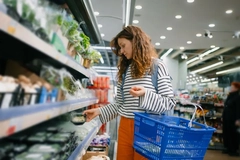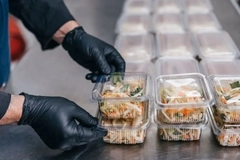Lumi empowers environmental storytelling with “simple and scalable” digital identification tool

10 Apr 2020 --- As packaging transparency and traceability are increasingly recognized as “non-negotiable expectations,” packaging technology company Lumi has launched a digital identification tool that provides instant, localized and accurate answers to packaging questions. By printing a QR code on a myriad of packaging formats, manufacturers can inform end-consumers on how their packaging is sourced, made and responsibly disposed of. As e-commerce is spiking sales due to the global coronavirus pandemic, Lumi’s mission is to help companies tell their products’ stories in a “more transparent, accessible and environmentally sound” way.
Lumi IDs can be printed on any packaging, the company states, including boxes, envelopes, jars, bottles, cans, tubes, publications, labels and collateral. Collaborating companies can detail any range of information via the app, such as material specifications, manufacturing details, disposal instructions and sustainability properties.
 Working primarily with e-commerce brands, Lumi notes that packaging sustainability is the fastest growing category of customer support inquiries and the number one source of churn for food delivery companies. “With Lumi ID, brands can far more easily communicate with their customers about the nuances of how they are approaching packaging sustainability. For some companies, sustainability now outweighs other factors, such as high-fidelity graphics or lead time,” Stephan Ango, Co-Founder and Chief Product Officer at Lumi, tells PackagingInsights.
Working primarily with e-commerce brands, Lumi notes that packaging sustainability is the fastest growing category of customer support inquiries and the number one source of churn for food delivery companies. “With Lumi ID, brands can far more easily communicate with their customers about the nuances of how they are approaching packaging sustainability. For some companies, sustainability now outweighs other factors, such as high-fidelity graphics or lead time,” Stephan Ango, Co-Founder and Chief Product Officer at Lumi, tells PackagingInsights.
“This is driven by a generational shift in demand that can be attributed to Millennials and Gen Z becoming dominant purchasers of consumer products. Every successive generation has made sustainability a greater priority and they are proactively asking brands they purchase from to meet those expectations,” he explains.
Indeed, FMCG brands are increasingly acknowledging the environmental attributes of packaging as a key selling proposition of consumer packaged goods. Innova Market Insights identified “The Language of Environmental Sustainability” as its top packaging trend for 2020, in which product packaging has become increasingly integral to brand-consumer relationships.
Moreover, the market reseracher’s third top trend, “Packing an e-Punch,” signals how online retail channel growth is opening up an array of brand enhancement opportunities, particularly through the consumer unboxing experience and so-called “wow factor” effects. These are notably played out within the wider context of increased environmental sustainability demands.
 Global policy drivers
Global policy drivers
Driving the environmental sustainability trend in packaging are “global policy changes,” according to Ango. “In China and across South East Asia, imports of recycled plastics and papers have been banned or significantly curtailed. This is leading to a greater proportion of packaging waste being landfilled in Western countries. As a result, companies are shifting away from plastics to improve end of life.”
Seeking to deliver more cradle-to-cradle solutions, Lumi also launched compostable poly mailers made from cornstarch PLA bioplastic last year. Ango flags that they have rapidly gained popularity among e-commerce companies, particularly in the fashion industry. In similar efforts, BillerudKorsnäs developed durable paper packaging for online retail mailing bags.
“Unfortunately the composting infrastructure in countries such as the US is underdeveloped. The options for composting locations are not easily accessible to consumers. We felt it was essential to provide a way for consumers to understand their local composting options in order for Lumi to promote compostable PLA packaging as a better alternative to plastic films, which can be difficult to recycle,” says Ango.
Largely fueled by anti-plastic sentiment and the desire to find more eco-friendly solutions to packaging disposal, biodegradable and compostable packaging is hitting the market in higher numbers and with increased sophistication. This taps into Innova Market Insights’ fifth ranking packaging trend, “Plant-based Packaging.”
Instrumental amid the COVID-19 crisis
Amid current supply chain disruptions and increased demand pressures in the packaging industry, Lumi ID can enable better traceability of inventory. “For food and medical product companies that are under heavy load due to COVID-19, Lumi ID can streamline the inventory management process to ensure no components go out of stock.
This is particularly powerful when Lumi ID is used not only on the packaging itself but also on load tags, pallet racking aisles and bays. Lumi ID is easy to integrate since it is compatible with almost every WMS and inventory management system,” Ango affirms.
Due to national quarantine regulations, Lumi ID can also help consumers find the best options to recycle or compost packaging within close proximity, thereby minimizing travel. “We also offer instructions so that consumers can learn how to compost at home,” he notes.
At its current stage, Lumi ID identifies packaging at the component level, but not at the individual unit level. “In the future, it’s possible that every individual unit of packaging could have identifiable information that allows its complete footprint to be accurately tracked, including last-mile delivery,” Ango concludes.
By Anni Schleicher











